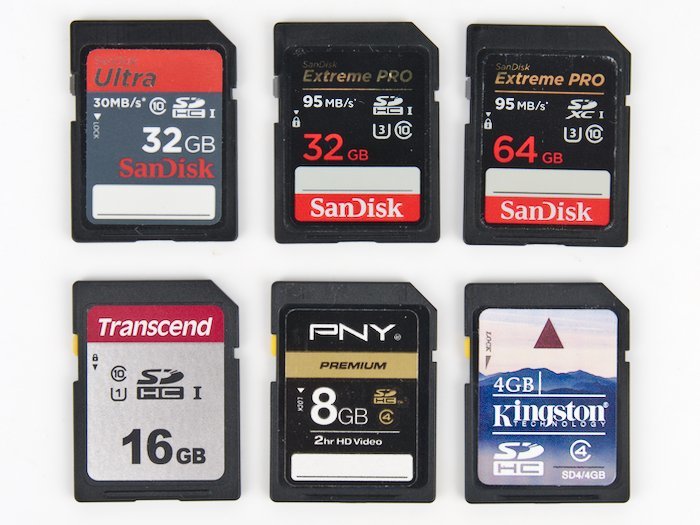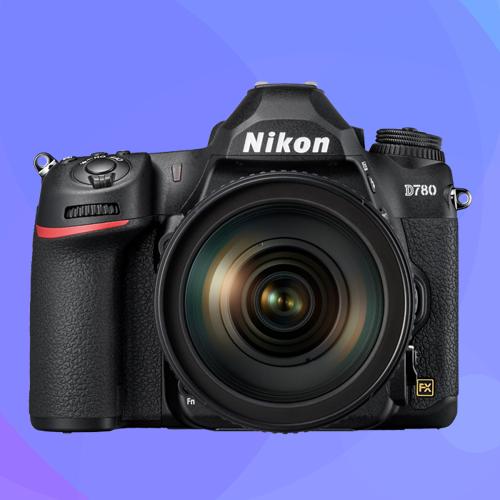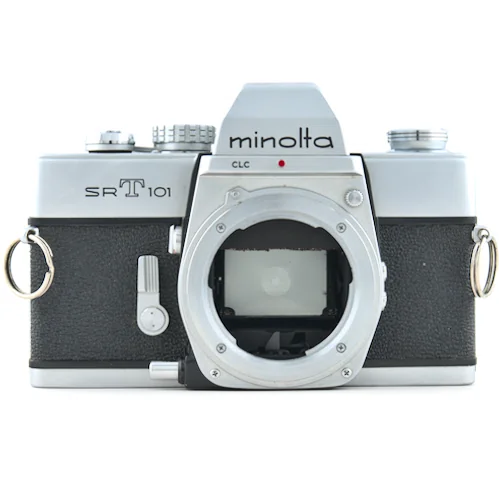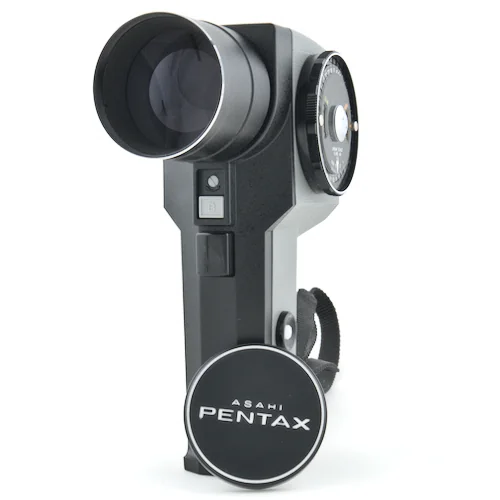
1° From Ansel Adams, a Pentax Spotmeter V Review
- Nathaniel Stephan
- Pentax spotmeter v
- November 30, 2020
Table of Contents
The Pentax Spotmeter V was used by Ansel Adams when he was developing the zone metering system. His fame from his landscapes of Yosemite National Park has cause generations of photographers to search out this light meter.
People wanting to emulate Adams often seek out the same tools that he used. This can cause people to value equipment for its reputation and push up prices.
Below is a review and overview of the features found on the Spotmeter V. Also included is some background information on alternative meters and Zone VI Studios modified meters.
Buying a Used Pentax Spotmeter V
As of February 5th, 2019, eBay prices ranged from $135-$195. Prices vary over time, so check current prices on eBay. Spot meters at the higher end of that range were in better condition and included the original wrist strap, case, and lens cap. Some even came with the manual.
Occasionally, the spotmeter can be found on some of the large online camera stores. I don’t recommend buying from them as the prices are 25%-50% higher than eBay.
Spotmeter V Review
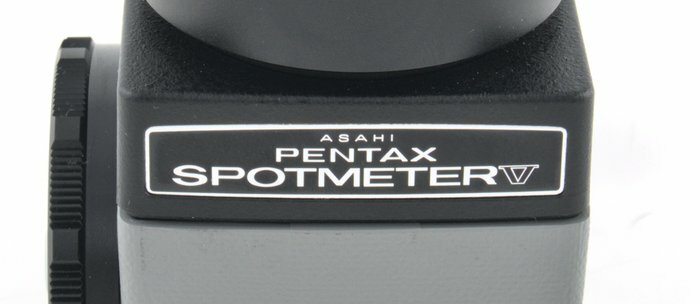
A spotmeter is an important tool, most commonly used by landscape photographers. The 1° angle of view makes it possible to take accurate exposure values of parts of a scene that are far away.
Medium and large format landscape photographers will often find themselves in need of a meter. I am not aware of a large format film camera with a built-in light meter. Many of the affordable medium format cameras do not have built-in light meters. The Spotmeter V would also be great to use with the Asahi Pentax Spotmatic SL.
Without a light meter, there is no way to take accurate light readings so an exposure can be calculated. Using a spotmeter makes it easy to meter highlights or shadows, so you get the exposure you want for the darkroom or post processing.
With modern digital cameras, a spotmeter allows the composition to stay fixed in place. The camera does not need to be moved around to use the spotmeter built into the camera. You’d want this for fast-changing light during a sunrise, sunset, or doing long exposures with an ND filter.
Spotmeter V Size
Upon picking the Asahi Pentax spotmeter up, the size and weight are immediately apparent. The meter weighs 448g (15.8oz) with batteries (3x LR44), lens cap, and wrist strap.
Taken from the manual - Dimensions: 62mm (W) x 163mm (H) x 127mm (D), the grip has a 34mm width. That’s roughly 6-1/2" tall, 5" long, and 2-5/16" wide.
All of the other spotmeters I have used have been smaller and lighter. However, you’ll be unable to find reviews, forum posts, or wiki that does not compliment the durability of the meter.
The Spotmeter V is the best built light meter I have reviewed. My other reviews include the Pentax Digital Spotmeter and Minolta Spotmeter F. If you are hard on your equipment, the durability is one benefit of an analog lightmeter.
Viewfinder in the Spotmeter V
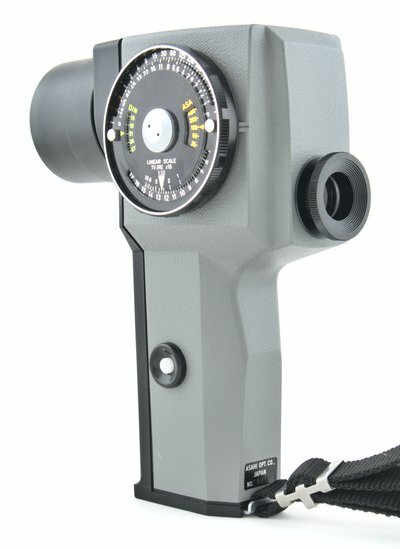
One benefit of the spotmeters size is the enormous viewfinder. It dwarfs the viewfinder on the Minolta Spotmeter F I own.
Just look at the size of the lens on the light meter. I have not used a light meter with a viewfinder that comes close to the Spotmeter V in size. I cannot overstate how enormous the viewfinder is.
The eyepiece ring can be turned to adjust it. Readings are taken from a 1° degree angle of view. The measuring range is EV 1-19 at ASA/ISO 100. Measurements can be taken from 1.5m to infinity.
For low light situations, there is an illumination button on the handle. The light produced is very faint and only lights up the EV scale from 1-7.
Your night vision will not be ruined as it produces a very low level of lighting. At the same time, you may not think the light works if you check when there is lots of light.
If you want to check the light leave the lens cap on or go into a dark room.
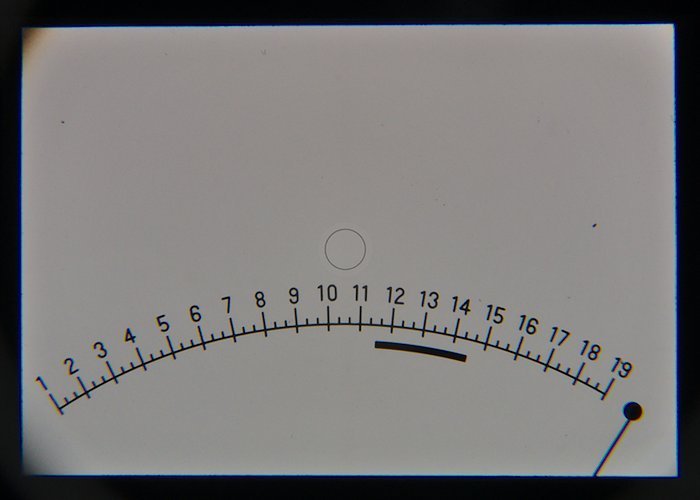
What the viewfinder looks like without taking a reading pointed at a white surface.
Light Meter Battery Check Button
There is a battery check button located above the light meter on button, and below the zero adjusting screw. It is gray with a ‘B’ printed on it.
Pressing the battery check button should move the needle to the black line that extends from 11.5 to 14.5 on the light level scale. Batteries need to be replaced when the needle fails to move to that line.
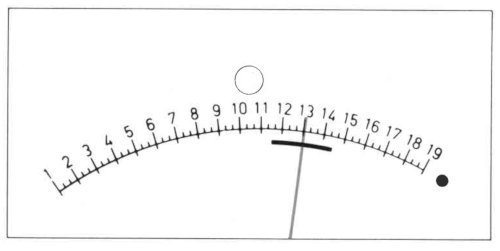
Image from the manual showing that the battery is good.
Replacement Batteries
Three LR44 batteries are needed to power the Pentax Spotmeter V. This is nice because an older Pentax Spotmeter model used two different batteries.
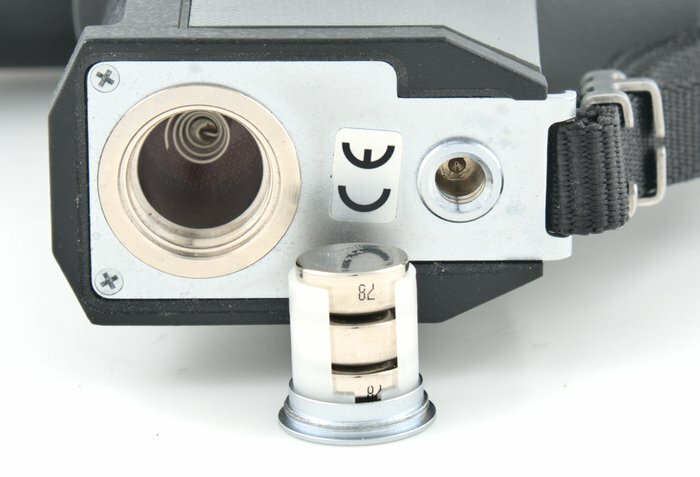
You can buy 10 or 20 LR44 batteries online for the price 2 will cost you in store. eBay has the cheapest batteries, but orders from Amazon might be faster.
The battery door is designed to be removed with a coin. I find that a nickel works best. The next best option is a quarter.
There is also a small plastic piece that sits in the battery door and is used to keep the batteries properly aligned. The plastic can become brittle or be damaged by batteries that have been left in long enough to burst and start corroding.
If you are not planning to use your meter in the short term, take the batteries out. Battery corrosion is one of the top killers of vintage photography equipment.
Pentax Exposure Calculation Dial
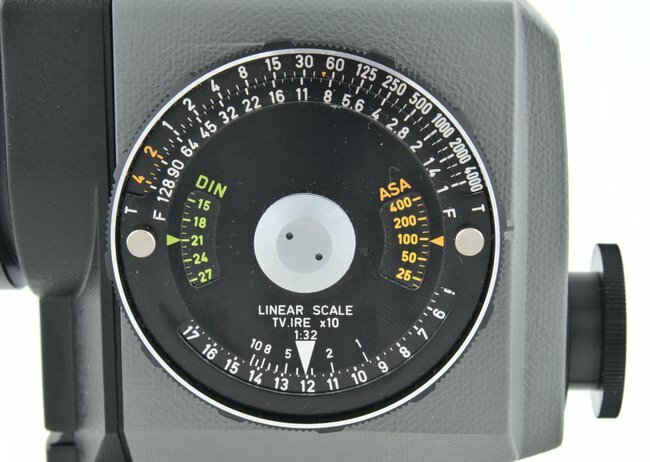
On the side of the meter is an exposure value calculation dial. By setting the correct ASA/ISO or DIN, the EV reading can be matched to corresponding apertures and shutter speed values.
The dial feels solid and well built. Enough force is required to move the dial that you don’t have to worry about it moving on its own.
When you are first using the meter, write down your readings so you have a log of what you did. This is helpful in general, but can also be important to figure out if your meter is not reading the correct values.
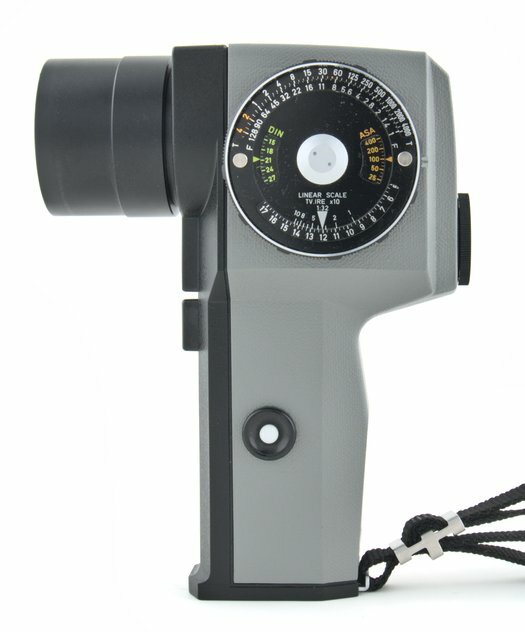
Additional Asahi Pentax Spotmeter Features
A tripod mount can be found on the bottom of the spotmeter. It has the standard 1/4" threading.
There is a loop for a wrist strap. A nice touch is that the loop is angled up so the meter can stand on a table without the strap causing it to tip over.
The meter originally came with a case, but I don’t have one to show. There are plenty of used meters on eBay that are being sold with the case.
The front takes a slip-on lens cap and has 46mm filter threads.
The slip-on metal lens cap has ‘Asahi Pentax’ embossed on the front. Felt lines the 48mm inner diameter of the lens cap. The fit is not very secure and additional precautions should be taken to make sure the lens cap is not lost in the field.
Conclusion
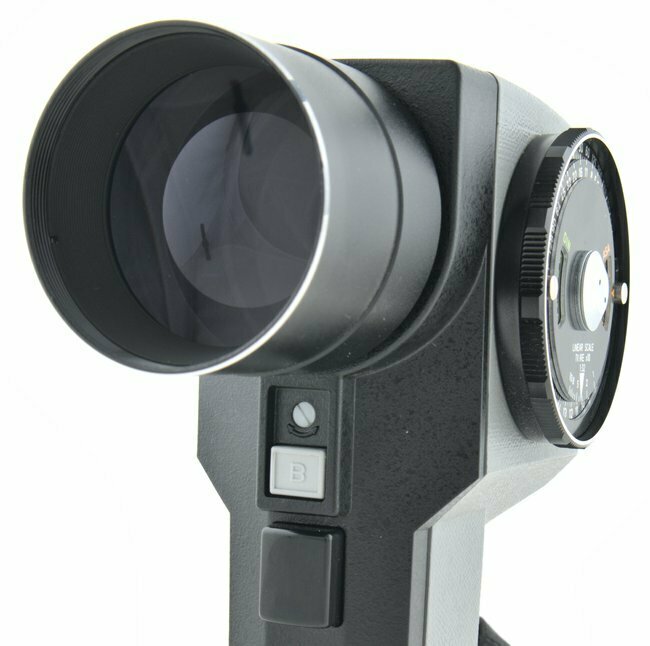
The desirability of the light meter comes down to your personal preference.
The Pentax Spotmeter V is a utilitarian tool. It only takes light readings. If you’re looking for a tool that stays out of your way, it is a great choice.
There are more expensive light meters out there with all the bells and whistles. Memory settings, light ratio calculators, flash meters, LCD screens, built-in wireless receivers, and incident meters are all things you can get.
If you don’t need those features, it doesn’t make sense to pay for them.
I like the meter, the viewfinder is stunning. However, I also like to do flash photography. I would rather have a meter that is also capable of taking flash readings.
I don’t want to end up with a drawer full of light meters that I need to switch between depending on the type of photography I want to do.
Rating - 3.5 out of 5
My rating of the meter is based specifically on my needs. One of the biggest reasons to choose analog over digital is durability. I don’t have a problem with breaking equipment, so that doesn’t apply to me.
I want lightweight and the ability to meter flash. The beautiful viewfinder can not make up for the lack of those features.
If you aren’t going to be using flash, my rating would change to be higher. It would also be higher if you did not highly value having it be lightweight.
7 Alternative Spot Meters for Every Budget
Affiliate Advertising Disclosure
Outside the Shot is a participant in the Amazon Services LLC Associates Program, an affiliate advertising program designed to provide a means for sites to earn advertising fees by advertising and linking to Amazon.com.
As an eBay Partner, I may be compensated if you make a purchase. I also participate in affiliate advertising programs with KEH and Adorama. More can be found on the Affiliate Disclosure page.
- Under $50 - Soligor Spot Sensor, Soligor Digital Spot Sensor, or Soligor Spot Sensor II. The Spot Sensor II will require getting lucky on an auction.
- $125 - Gossen Ultra Spot Meter
- $200 - Pentax Spotmeter V
- $350 - Asahi Pentax Digital Spotmeter
- $600 - Sekonic L-858D-U
With the exception of the Sekonic, all the light meters will have to be purchased used. This isn’t a bad thing, as used gear offers a far better value than new.
Zone VI Studios Modified Pentax Spotmeters
Zone VI Studios was a company run by Fred Picker. They manufactured some 4x5 and 8x10 large format field cameras, darkroom equipment, modified light meters, and published The Zone VI Newsletter.
Meter modification included two changes to match the spectral response of Kodak Tri-X film. The first was adding internal baffling to reduce light reflections.
The IR cut filter was replaced and UV filter was removed. These changes were supposed to reduce exposure errors.
Additional meters that were modified are the Pentax Digital Spotmeter and the Soligor Spot Sensor meters.
Modified meters will work with digital cameras, but do not have any advantage.
Modified spotmeters sell for a premium. You should only pay that premium if you are shooting medium or large format film.
More information can be found on FredPicker.com and a Photrio.com forum thread.
Pentax Spotmeter V PDF Manual
A PDF version of the manual can be found at Butkus.org.
